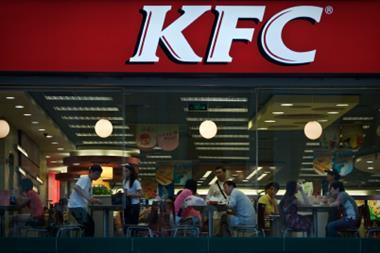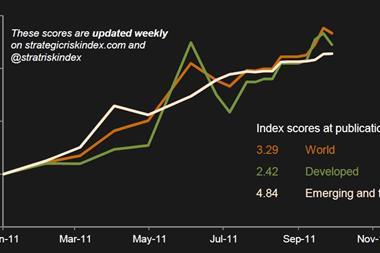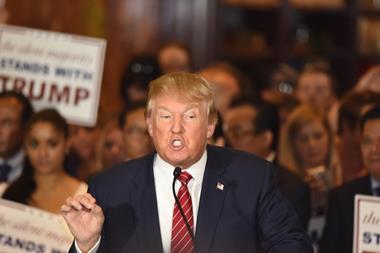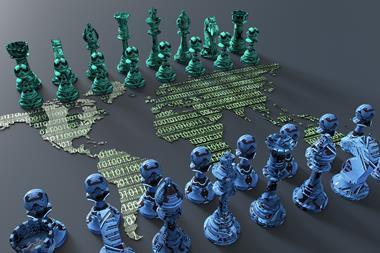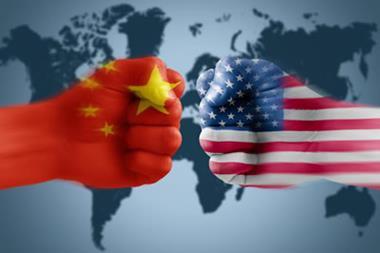Times are bountiful for the LEGO Group, but it’s not all rosy, explains Hans Læssøe, the company’s head of strategic risk
Flick through the whole issue with our ONLINE READER
COVER STORY: A theme park full of the childish screams of revellers might seem a strange place for a StrategicRISK correspondent to find himself on assignment. But there’s an easy explanation: LEGO Group’s headquarters are smack bang opposite LEGOLAND in Billund, a small provincial town in Denmark, about 250km west of Copenhagen. And this is where you will find Hans Læssøe, head of strategic risk for the legendary Danish toymaker.
While Billund is not built out of LEGO, it does more or less owe its existence to the famous plastic bricks. Around one-third of the population work for the LEGO Group, one of Denmark’s most famous brands.
This is the toymaker’s creative and production powerhouse, birthplace and spiritual home of a product that stretches back to a small carpenter’s workshop in the early 1930s. Over the past 80 years it has grown into the world’s fifth largest toymaker.
Læssøe is by no means a conventional risk manager, having spent most of his professional career (more than 25 years) working for the toy manufacturer – and never for an insurance company.
A cheerful and chatty man, he lives surrounded by a large family and his two Shetland ponies on a ranch just a stone’s throw from Billund. (He admits that his job makes him popular with his grandchildren; he’s been to LEGOLAND – now owned and operated by the Merlin Entertainment Group – more times than he cares to admit.)
“Big company, small town,” he says, greeting me as I marvel at the huge LEGO bricks towering over the entrance to the company’s headquarters. Behind a tall fence, children scream as they hurtle down one of the rides that loop above LEGOLAND just behind the corporate head offi ce.
About 37 billion LEGO bricks were made in Billund last year, equivalent to around four million elements an hour. “That’s 72,000 a minute,” says Læssøe – just one of the statistics he can rattle off.
Another that sticks is that LEGO built 233 million mini-fi gures last year, which is enough, if they were stood side by side, to stretch from Billund to Boston in the USA. Læssøe demonstrates the mass production as he escorts me around the moulding facility, where the bricks and mini-fi gures are crafted. Each room has lines of automatic moulding machines that churn out hot little coloured plastic bricks every couple of seconds. This is the real Santa’s workshop.
Crisis, what crisis?
The LEGO Group has had an impressive few years, experiencing huge growth between 2005 and 2008. The success of the toy market is inversely proportional to the state of the overall economy, says Læssøe. “The best thing that can happen to us is a fi nancial crisis,” he says. That’s because parents tend to buy fewer expensive high-tech gifts for their children but still enjoy showering them with cheaper toys, particularly at Christmas.
Læssøe is eager to point out that LEGO toys can be educational; building a model from his company’s products helps young children to develop spatial awareness, he says, while older children must be creative, imaginative – and patient. In a virtual world of PlayStation and Xbox games, this is a powerful message for a generation of parents keen to watch their children play in a more traditional way.
LEGO has also avoided some of the problems that have hampered its competitors. In 2007 Mattel, a huge US toy fi rm, was forced to recall more than 18 million Chinese-built toys after fears that they were contaminated by paint containing dangerous levels of lead. The toys were made by one of Mattel’s contract manufacturing facilities and the recall hit its reputation and stock price hard.
Most of LEGO’s products are built in Europe, although there is a facility in Mexico that supplies the US market. That’s helped the company to avoid some of the negative reactions to some ‘made in China’ products. Major retailers (such as Walmart in the USA, which exerts immense infl uence) are increasingly reluctant to stock toys made in China.
This has boosted companies whose products are built in countries perceived to be more reliable and with stricter standards.
It is not all rosy though. Toymakers operate in a highly competitive market with some of the most fi ckle consumers in the world, children. “Two-thirds of all the toys sold in the world are new,” Læssøe says. But the average product lifecycle is 20 months – which is why the company needs to stay ahead ofthe curve.
“We are dependent on being able to again and again to come up with toys that children think are fun. In this industry, you are never more successful than your current product portfolio,” he says.
Playing styles
The toymaker benefi ts from an established tradition in Europe, with many families entering their third LEGO-playing generation, while in the USA, there’s been a steady growth of second-generation users.
“Our growth in the USA has been phenomenal: more than 30% a year over the past few years,” Læssøe says. It’s a success that is helped by a Los Angeles offi ce responsible for tie-ups with Hollywood blockbusters.
The Middle East, however, is a small market. In fact, when a Danish newspaper published satirical drawings of the prophet Muhammad, Muslims were told to boycott Danish products, including LEGO. “We found we were selling more in London than the Arab countries all together so we could live with it,” Læssøe says.
Researchers have identifi ed several cultural differences between the way children play. They make for interesting reading but are based, somewhat, on stereotypes.
Children in Asia, for example, typically don’t have much free time to play because they are focused on work. “It is so intense in some countries that South Korea is contemplating a law that bans the education of children under 15 after 10pm,” says Læssøe. Toys sold here, he explains, need to have an educational angle.
German children, on the other hand, are brought up to be thorough, meticulous and focused. This means technically complex LEGO toys that take hours to build are more likely to be popular. American youngsters, meanwhile, are typically more outgoing, social and competitive. “They want smaller models that are faster to build.”
Læssøe says that designers must bear these different styles of play in mind when they come up with a concept for a new toy. As a further safeguard, LEGO uses children to ‘sanity check’ the toys before they go to market. Sometimes this results in a redesign, as was the case when, after testing a new LEGO train on toddlers, designers realised they would have to overhaul and strengthen the wheel mechanism because when children played with it they found it much more to fun to wheel the train across carpets, walls – and the back yard – than to keep it on the offi cial track.
Seasonality is another major problem, and one where LEGO is more vulnerable than its peers. “We do not have any outdoor, summer toys,” Læssøe says. “Sand and LEGO bricks are a bad combination.” Hence the company is more dependent on Christmas sales than its competitors.
“Half of our sales on the shop fl oor are during the seven weeks preceding Christmas and, even then, we have some 20% of our full-year sales during weeks 50 and 51,” he says. This makes relationships between LEGO and its retailers vitally important.
“In the good old days, toys were sold through small specialist stores, which were as dependent on us as we were on them,” he says. “Not so anymore. An ever-increasing volume of sales is through general stores such as Target or Walmart in the USA, Tesco in the UK, Metro in Germany, and Promodes in France. For them toys are only a few per cent of their total sales and the sale of LEGO is but a few per cent of that. This makes us vulnerable to retailer prioritisation, including the signifi cant risk of being pushed out by a private label copycat product.”
Risky business
It’s in this environment that LEGO bosses asked Læssøe to take on the job of strategic risk manager.
He set out trying to fi gure out the best approach. “We needed something to address our strategies … something pragmatic and simple.”
Four years ago he started working one day a week on risk management. In late 2006 he was ready to have a risk identifi cation workshop. “I called in some 25 senior practitioners from legal, control, product development, sales and marketing. We sat down and identifi ed 90 strategic risks that could hit us.”
In early 2007 he started compiling a risk database to form the basis of his risk management information system. With the help of two other experienced colleagues, he then assessed each of the risks on a probability versus impact matrix. “Then we threw it out to each line of business for them to assess, and asked them whether they agreed with us.”
The idea of the project was to build strategic risk management on top of an already well-established tradition of operational risk management. “I wanted to get ahead of the decision-making process,” says Læssøe. “We’ve done strategic risk management before but it’s always been implicit, ad hoc and unsystematic; now we have a standardised process so that we know it’s getting done properly. I seriously hope I can install it as a piece of culture. Strong risk management for me is strong mental awareness of the concept of risk and opportunities.”
Currently the scope is being expanded. Since 2009 he’s been working on a two-stage process that he’s called Active Risk and Opportunity Planning (AROP). The idea here is to get business managers to consider the risks and opportunities at an early stage in their project planning, rather than after the business decision is made. By the end of last year, Læssøe was ready to launch a training project to embed risk culture within the organisation.
Several things mean life as a risk manager comes naturally to Læssøe. Understanding the company inside out is obviously handy. But right from the start, his bosses have given him a free reign; they’ve always been on board with the idea of risk management and have given him all the time he’s wanted to implement it. Læssøe is thankful that the private LEGO, still owned by a grandson of the founder, is not bound rigidly to a compliance-based approach to risk management.
He compares a company that has its risk reporting in line with legal requirements and no more to a car whose driver is competent enough to avoid an accident but unable to realise opportunities by avoiding snarl-ups. His mantra is for risk management to be forward looking, believing that it can add real value by spotting problems before they arise. It’s a successful mantra; Læssøe was a runner-up in StrategicRISK’s 2009 European Risk Management Awards.
LEGO’s rapid growth between 2005 and 2008 brought problems, however: he says it made it diffi cult for some of the middle managers who joined LEGO in 2004 to fathom downside risks, because they had never experienced anything other than an upward trend. Being a LEGO lifer, he remembers the dark days between 2002 and 2004 when the company’s turnover dipped by a third.
Future gazing
Læssøe does a lot of scenario planning. By outlining mega trends in the global economy – political, social, technologial and environmental – he has identifi ed four future risks. The business planning process is then tested against each one. “None will materialise, but we will probably get parts of all of them,” he says.
Scenario one sees economic growth continue slowly but steadily. Few changes are required, he says.
Scenario two, a ‘brave new world’, forecasts massive growth in the global economy, mainly driven by China. Here, European families that feel under threat from their Chinese counterparts limit their children’s play time and increase the emphasis on hard work. LEGO would have to take this on board when designing new products but would be in a strong position to compete, he says. Individualism also features – or, as Læssøe says, “one size fi ts me”. Products would have to be tailored with this in mind and mass production would become harder.
The third scenario is characterised by cut-throat competition. A decline in trade here will cut out all but the most professional retailers, threatening many of the specialist stores where LEGO sells its products.
Countries eager to protect their economies might also go into “legislative overdrive”. “We’re starting to see this already with product safety rules,” he says.
Læssøe has called his last scenario ‘Murphy’s surprise’. This one is based on a double-dip recession: the euro has collapsed and the dollar is down. All the major banks have been nationalised and the free-fl ow of money and goods has frozen. High unemployment has also sparked social unrest.
But he is confi dent of managing such a scenario: “The value of strategic risk management is that it supports a business system that will prevail and succeed, even if the world around us is facing hard times and high uncertainty.” ¦
Nathan Skinner is editor of StrategicRISK






